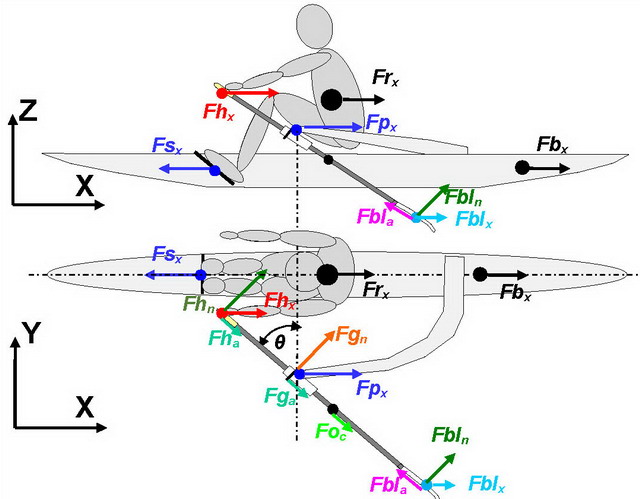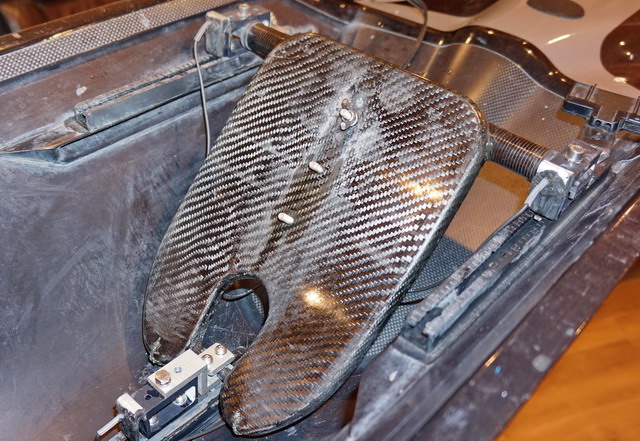The stretcher force is not easy to measure and analyse because its direction and centre of application varies throughout the drive: at the catch, a rower pushes the stretcher with toes and more vertically; during the second half of the drive, the force becomes more horizontal and located at the middle of the foot (RBN 2015/02). In other systems, a simplified stretcher force is measured without reference to its direction, but this data is pretty useless in terms of calculation of propulsive force produced by a rower.

BioRow strong scientific approach dictates that only horizontal component of the stretcher force should be taken into account for determination of Balance of propulsive forces at the rower and boat (RBN 2019/01-02). Therefore, a special load cell was developed, which measures only horizontal force at the point, where the stretcher.
The load cell is a strain-gauged rectangular structure, which is mounted to the boat at its bottom, and the stretcher is connected to its top. As the stretcher is usually mounted at three points, this stretcher sensor consists of three load cells, which measure the total horizontal force applied by a rower (two cells are mounted at the top bar, and one at the bottom).

The limitation of this design is the requirement for horizontal mounting structure in the boat (the common grid-rail would work for it), so this sensor can not be used in some singles, where the stretcher is mounted directly to the hull at the top. Each load cell has a separate 3-pin connector, then all three cells are connected through an adapter to one port of BioRow Master or Slave unit.

This design of the stretcher force sensor can produce an important information about rower’s technique. Apart from calculation of the total propulsive force generated by a rower (which is a difference between the propulsive pin force and horizontal stretcher force), a point of force application on the foot-board could be detected. This would show the balance of right-left feet forces, and engagement of toes-heels for force transmission, which could be used for evaluation of rower’s effectiveness as well as for optimisation of rigging parameters and rowing shoes design.
Specifications
|
|
One load cell |
Whole stretcher sensor |
|
Measured force range |
From -300N to +800N |
From -900N to +2400N |
|
Dimensions |
70mm (W) 20mm (W) 40mm (H) |
|
|
Weight |
95g |
285g |
|
Length of the cable |
0.3m |
0.6m |
|
Interface |
analogue 0 – 5V |
analogue 0 – 5V |
Foot-stretcher force sensor
- Product Code: Stretcher force sensor
- Availability: In Stock
-
ÂŁ1 200.00UK
- Ex Tax: ÂŁ1 200.00UK
Related Products
BioRowTel System
BioRowTel Measurement System Overview The BioRowTel system measures the most essential compone..
ÂŁ8 325.00UK Ex Tax: ÂŁ8 325.00UK
BioRowTel Master unit
Master unit is a core module of BioRow telemetry system, its v.5 contains the following features: ..
ÂŁ2 900.00UK Ex Tax: ÂŁ2 900.00UK
Instrumented gate
This gate design was created in 2010 and represents the fifth generation of our Instrumented gat..
ÂŁ600.00UK Ex Tax: ÂŁ600.00UK
3D Pin Force sensor (Instrumented C-bracket)
This sensor was made for research purposes mainly, where sophisticated analysis of balance of fo..
ÂŁ1 500.00UK Ex Tax: ÂŁ1 500.00UK











